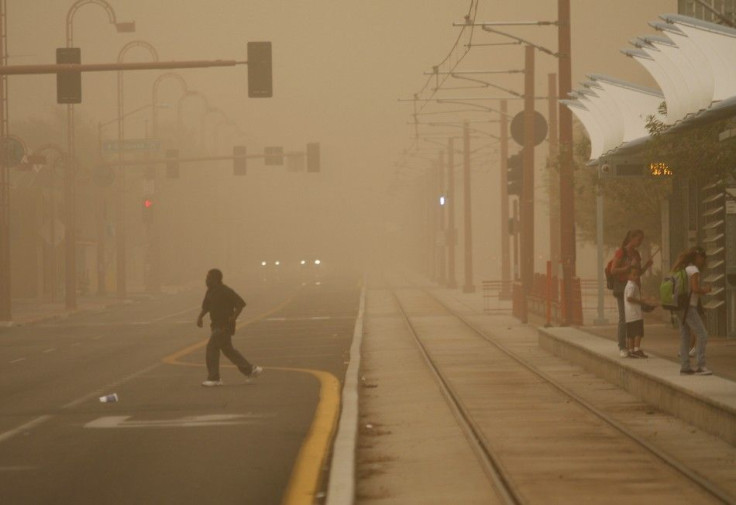Phoenix Dust Storm: Arizona Hit for Third Time [VIDEO, PHOTOS]

A giant dust swept through Phoenix, Arizona Thursday, toppling telephone poles, trees and power lines and ripping the shingles off of roofs.
The storm was the third to hit the Arizona capital this summer. Some flights leaving from the Phoenix Sky Harbor International Airport were delayed about 40 minutes.
Also known as a haboob, the storm is essentially the same phenomenon as the sand storms that periodically hit Africa, particularly in the Sahara Desert.
The haboob forms as cold downdrafts along the leading edge of a thunderstorm lift dust or sand into a huge, tumbling dark cloud that may extend horizontally for over a hundred kilometers and rise vertically to the base of the thunderstorm, C. Donald Ahrens notes in his book Essentials of Meteorology: An Invitation to the Atmosphere.
Spinning whirlwinds of dust frequently form along the turbulent cold air boundary, giving rise to sightings of huge dust devils and even tornadoes. Haboobs are most common in the African Sudan (where about 24 occur each year) and in the desert Southwest of the United States, especially in southern Arizona.
© Copyright IBTimes 2025. All rights reserved.





















